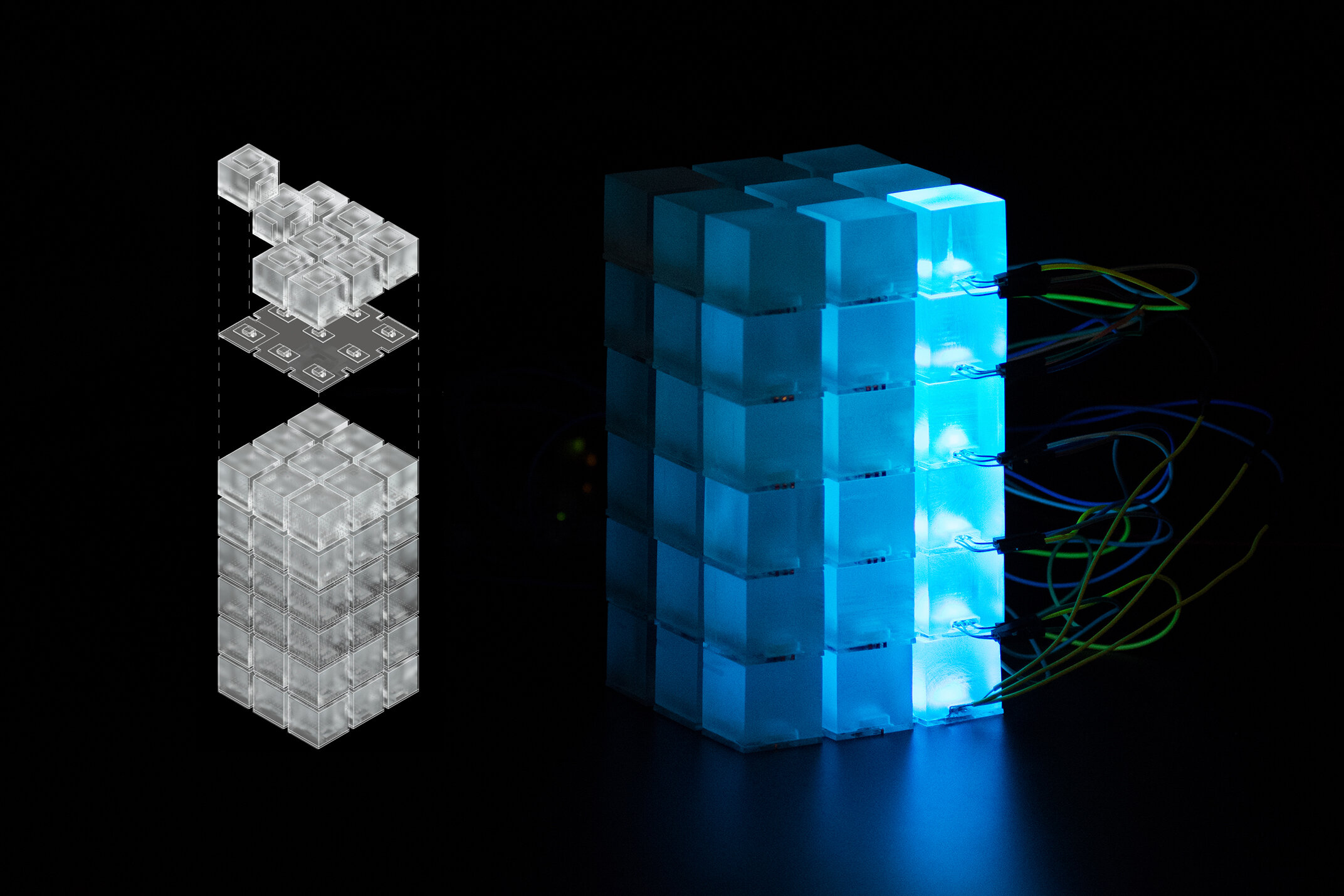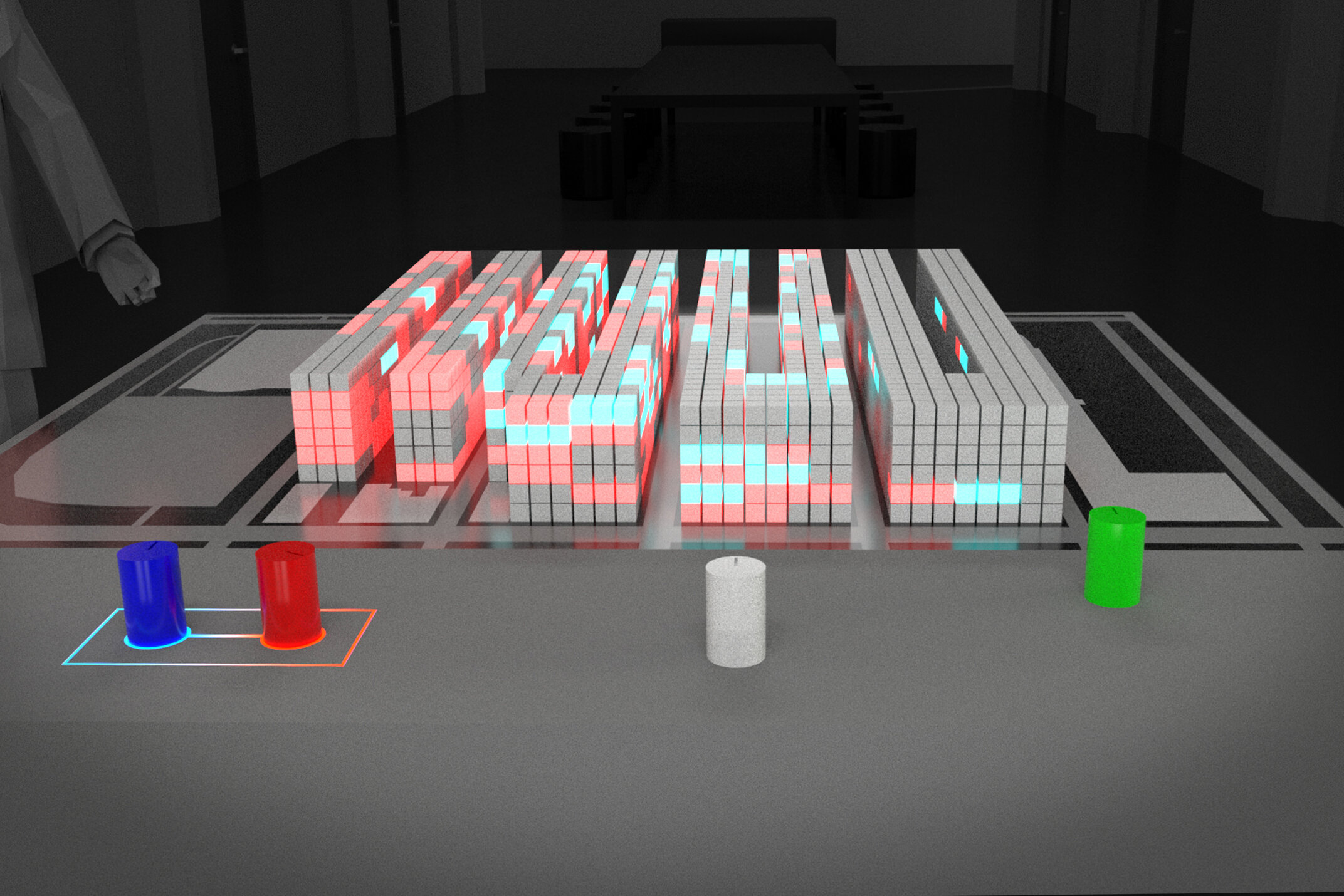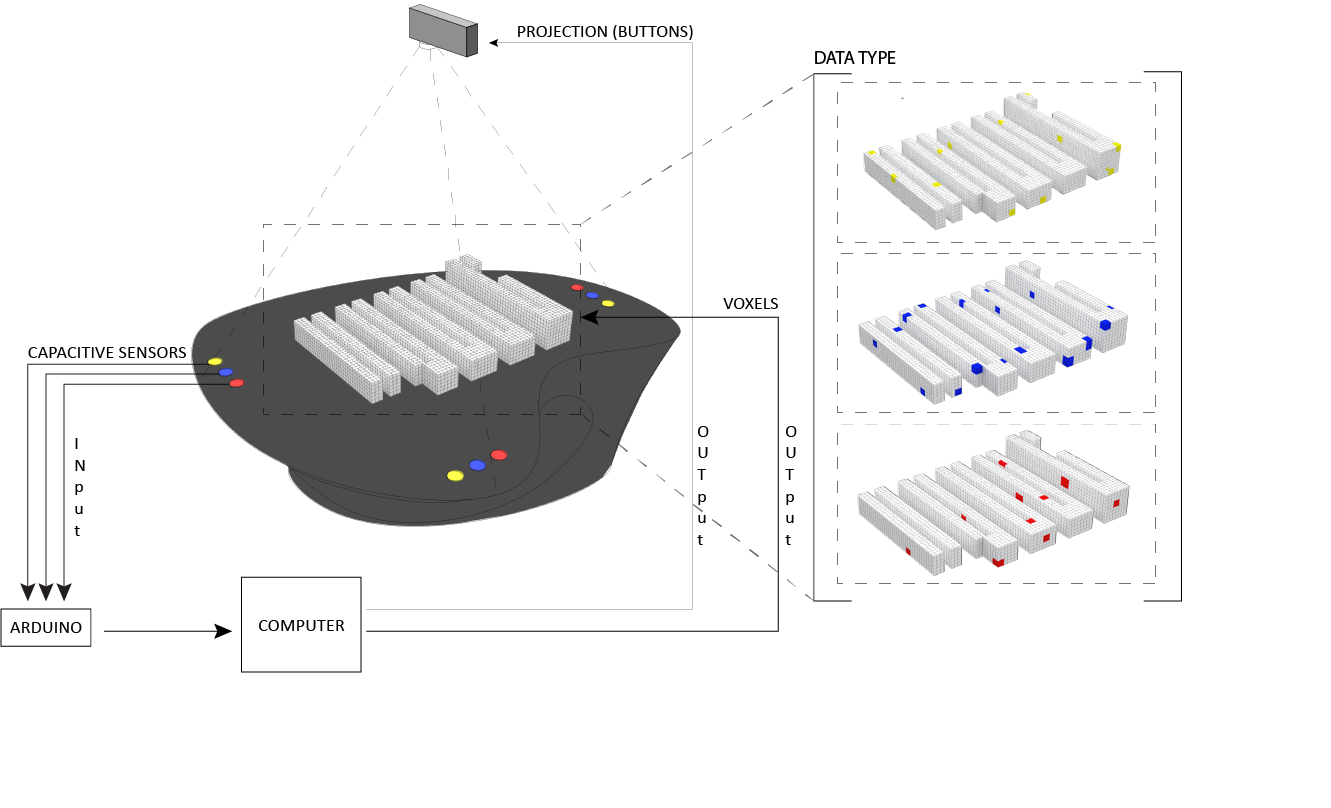Cyber-Physical Architectural Models



Cyber-Physical Architectural Models (CPAM) are next-generation tangible interfaces for Smart Buildings—scale models that connect full-scale buildings with their digital representation. Scale models have been historically used in architecture, city planning, and engineering to represent buildings and cities for design, decision-making, and management. CASE investigates how to expand the use of these traditional physical models by integrating an input-output computational layer to visualize and control building information in real-time, such as use, occupancy, and environmental data.
CPAM implements novel technologies for visualization and control. For visualization, the system combines a grid of addressable LEDs with fog projection controlled by an array of atomizers. While the grid of LEDs displays information through the shape of the buildings, the fog projection displays in the interstitial space between the buildings. For control, the system combines capacitive sensing with object tracking. With capacitive sensing, the user can browse and select information by touching the physical surfaces of the model. With object tracking, the user can pick up and manipulate data by moving physical objects within the model.
Project Date: 2019
Researchers: Daniel Rosenberg, Fengqi (Frank) Li, Zack Blais, Valerie Inti, Madison Irish, Melissa Martinyak, Will Winkis, Rachel DiCristina, Yang Xichang, Matthew Matuska, Gavin Walsh, Kylie Wyskochil, Monica Ban, Jason Noon-Damiani

